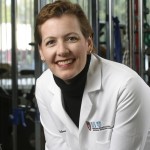Every year I teach on the faculty of Harvard Medical School’s CME publishing course, I inevitably learn something new from Dr. Julie Silver, the course director. I’ve asked Dr. Silver to share some of her advice, both, in general, and in writing for the health care market.
Lisa: How have you seen publishing change in the past couple of years?
Julie Silver, MD: The use of social media. I tell authors that using social media is like learning to use the telephone. You just need to know how to do it. It’s now part of the fabric of our society and how we share information and knowledge.
Lisa: Yes, it’s pretty hard to interest a publisher if an author doesn’t have an online presence–a quality website and some social media presence–no matter how interesting the book.
What advice are you giving aspiring authors that’s different from what you told them in the past?
Julie Silver, MD: Some people discount the value of traditional publishing, because they think that social media, including blogging, is the same thing. Social media and all forms of self-publishing have an important role, but it’s not the same thing as traditional publishing. So, it’s not an either or but a “use everything” strategy that really gets people’s work and messages out to their intended audience.
Lisa: What would you say are the three most important places to be online if you’re writing about health and wellness?
Julie Silver, MD: You should always target your online time and publishing to address your core audience. The biggest website with the most hits is not necessarily the one that you want to spend on. Consider your audience and how you can best reach them.
Lisa: That’s important advice. It’s great to be on the Huffington Post or WebMD, but if you’re writing about autism, you’ll reach even more potential readers through a site like autismspeaks.com. And as someone who writes about cancer, among other health topics, you blog at Livestrong.com–a site where people are specifically going on to find out about cancer topics.
Graduates of the Harvard Medical School publishing course tend to come back year after year, why would you say that is?
Julie Silver, MD: Publishing is changing quickly and keeping up with industry information and trends is critical to success. Also, the more often they come, the more connections they make with publishing professionals who can help them to reach their goals.
Lisa: Yes, I’ve worked with authors who built relationships with agents by coming year after year. I also think some people come the first year just starting to think about a book. They go home with a bunch of ideas or thoughts brewing and then need time to play with it. They may work with someone like me to clarify the book or proposal and then return a year later with a much clearer sense of their book or even a full proposal written and a plan to pitch the book to agents. I’ve seen that strategy work very well, especially if they work on building their platform during that first year and come back with a strong following.
What are some recent successes stories from the HMS publishing course and what are some of the factors that made their book successful?
Julie Silver, MD: One of my favorite stories is about Jill Grimes who published an adult nonfiction book titled Seductive Delusions: How Everyday People Catch STDs. Usually an adult nonfiction book will not crossover into a young adult (teen) audience, but Dr. Grimes’ book is now part of the Texas high school curriculum. That’s an amazing accomplishment!
Lisa: I often tell my book writing students and clients that they can think of their audience as a dartboard. The core audience is that bull’s eye and it’s critical to write specifically for that core group, not to try to write for everyone. You can have additional chapters for specific niche audiences, but you want to write the bulk of the book for your core audience. The magical part is that other readers will be attracted to the book, even if they are not the core audience. But if you write the other way around and try to write it for everyone, you lose your voice, no one “gets” that the book is for them, and you have a harder time reaching anyone.
Anything else you’d like to add?
Julie Silver, MD: One of the key things I tell people is to make sure that their book idea isn’t something that can be easily Googled–like how to treat your high blood pressure. If you can google it and get similar information, it’s no longer going to work as a book in today’s market.
Lisa: We touched the tip of the iceberg. If you want to learn more about Harvard Medical School’s CME publishing course, click here. You don’t have to be a doctor to attend. One of my current Bring Your Book to Life students is writing a book about her depression and successful treatment with TMS, a therapy that uses magnets on the brain to cure depression. She has no medical training, but I’m quite confident that this book (and author) are going to wow some of my colleagues at the course.
One thing I recommend to my students is to take advantage of all the extra’s–sign up for an evening writing workshop, take part in the “Shameless Pitches” and ask agents for feedback on your book ideas. Will you be joining us? If so, what do you hope to get out of the course?


